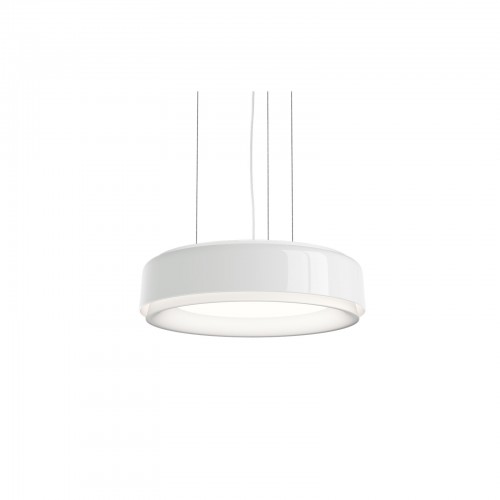Louis Poulsen Ph 3½-3 pale rose brass pendant lamp 33 cm pink
Deliveries may be delayed due to the Christmas period
Manufacturer Louis Poulsen - Designer Poul Henningsen - Color: Pale pink - Material: Blown glass - Height: 219 mm - Width: 327 mm - Light source: 1x60W E27
![]()
![]()
![]()
![]()
![]()
![]()
![]()
![]()
![]()
![]()
![]()
![]()
![]()
![]()

 Secure and verified payments
Secure and verified payments
Paypal, credit card, bank transfer
 Guaranteed Products
Guaranteed Products
Buy new products, with original packaging and covered by warranty.
 Our experts
Our experts
We offer you maximum availability by phone and by email.
 After-sales assistance
After-sales assistance
We are always at your disposal, even after the purchase.
System PH was created to provide efficient, more pleasant and completely glare-free lighting in homes when electric light began to replace candle chandeliers and kerosene lamps in the late 1920s. Commercial and public authorities were the first to appreciate the highly functional and ultramodern look of the PH lamp. However, in most homes, the chandelier above the dining table was still the favourite lamp, now electric and fitted with silk shades. With his reflective three-shade system, Poul Henningsen wanted to prove that the same atmosphere as kerosene lamps could be achieved without compromising the quality of the lighting. However, many people wanted a warmer, more welcoming light than the light bulbs of the time. The silk did, however, soften the light and create the atmosphere, but at the expense of the quality of the light. For Henningsen and Louis Poulsen, this problem became an opportunity to reach private customers. Around 1930, Louis Poulsen launched an extensive series of PH lamps. Designed specifically for domestic use, many were smaller, suitable for any setting and less expensive than the classic PH lamps of the time. To bring more warmth and personality to the home, all the new lamps were available in amber, red and yellow glass, as well as the classic variations with opal, matt white or metal shades. The series was a huge success. The PH 3½-3 Table Brass Pale Rose is suited to our times, where subtle but bright lighting is often preferred in a cosy setting. Poul Henningsen also had a weakness for pale pink and the way it could diversify the look of a lamp and its light. Around the same time, he created Rosa Septima, a particularly delicate variation of Septima, his striking seven-shade glass crown. Thirty years later, he used the same light pink hue on the insides of the elegant copper shades of the iconic PH Artichoke. Today, the dimensions of the PH 3½-3 Ottone Pale Rose pendant give it almost universal versatility, making it suitable for places where a touch of style is appreciated as well as an even and very subtle distribution of light. The soft curves, the unique silhouette of the three-shade lamp, combined with the pale pink color, the clear edges and the white textile cable make it stand out in any environment. Although it looks very special on its own, it is even more impressive when arranged in a row, even when switched off, where the shiny surface of the delicate mouth-blown Italian glass reflects its surroundings. As in 1930, the pendant has an elegant brass part that over time forms a patina and gives the lamp additional character. To maintain the original brass finish, the lamp can be carefully polished from time to time.
Lighting system
The luminaire is based on Poul Henningsen's famous three-shade system and reflects the light downwards, while spreading a soft glow. The pale pink hand blown opal glass shades are polished on top and sandblasted opal white on the bottom, giving a soft and romantic light.
Materials and finish
Materials: Shades: Pale pink four-layer blown glass, polished on the outside, sandblasted on the inside. Pendant: Brass, brushed and untreated with fine lines. Untreated brass may change and patina over time.
Finish: Untreated brushed brass with fine lines. Pale pink glass with white sandblasted interior.
Dimensions and measurements
Width x height x length (mm) 327 x 219 x 327 Maximum 2.3 kg
Light class and source
Ingress protection IP20. Insulation class II without earthing.
1x60W E27 Light source
Mounting
Suspension type: white textile cable 2 x 0.75 mm2. Cable length: 3.2 m. Ceiling rose: yes.
Information
Brass is untreated. This causes the surface to change over time and a patina to form if it is not polished.

























